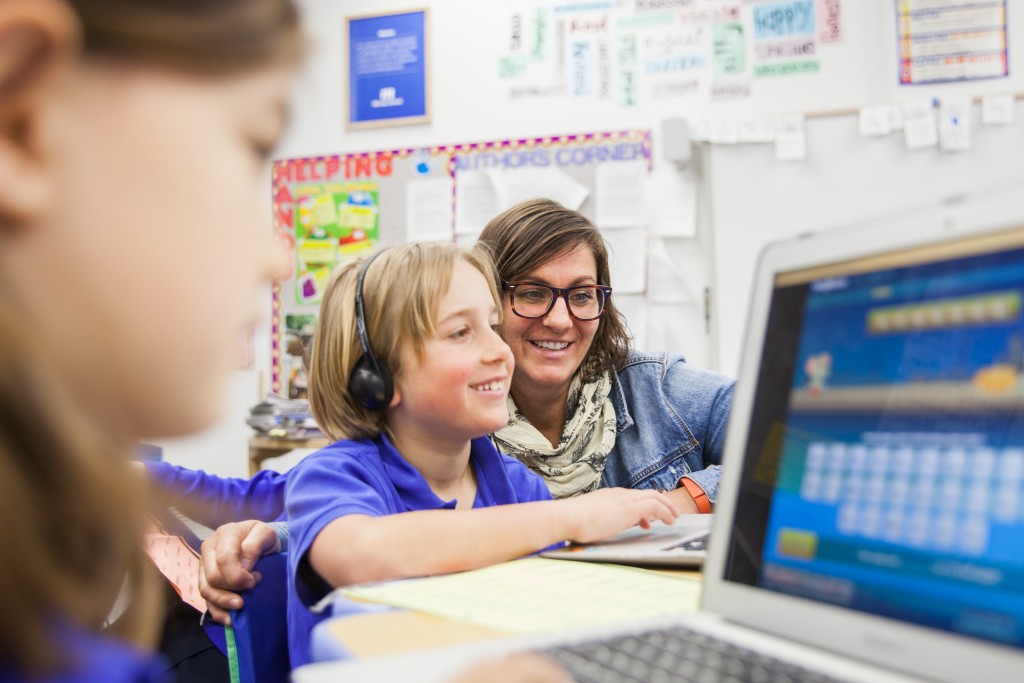“He has a soft marker for Down’s syndrome”, the ultrasound technician told us. At 35, I was expecting our second child and thrilled to find out we were having a boy this time around (we already had an amazing 2-year-old daughter). Now my head was spinning. Ultimately, we decided that Down’s syndrome would not alter our plans to have a baby, so we proceeded through the pregnancy without further screening. At 33 weeks, I woke at dawn with stomach pains. Within a couple of hours, my son arrived. His lungs were not fully developed and he needed a respirator, but he was otherwise healthy (without any signs of Down’s).
Unlike our daughter, who seemed to reach milestones at lightening speed, our son was significantly slower in many aspects of his development. He did not crawl until he was over a year. By the time he was 2, he only said “mama” audibly. Concerned about his speech, we had him evaluated. Testing was negative, and we were advised to give him more time. Soon after, he began to make great strides. As he became fluent, he quickly learned the alphabet and could count up to 30. He displayed a laser-like focus when it came to listening to stories or watching television programs. Then he spontaneously began reading my daughter’s kindergarten books aloud. He had not yet turned 3.
At this point, my husband and I were experiencing challenges with my daughter’s learning. She was not performing well in school, and required tutoring at a learning center while being evaluated for a learning disability. As our son waited quietly in the waiting room, one of the tutors (who is also a lawyer and special education advocate) took an interest in him. Each time we came in, she began talking to him more and more. Soon, he began insisting on being taught. Turns out, he could follow the lessons and perform all of the computer programs better than many of the 8-year-old kids. That’s when the specialist told me that our son was highly gifted and should be tested for admittance to the Mirman School. In fact, she went, as far as to say that there is no other school in LA that he should attend.
We live in a community South of LA where few people opt to send their kids to private schools. The public elementary schools are some of the highest performing in the state. More importantly, I had already heard about Mirman, through some of my colleagues who lived in LA and were entrenched in the private school admission process. I heard NOTHING good. “The kids are freaky”; “all of the students walk around school bragging about their IQ score.” However, our specialist was relentless. She was rapidly gaining our trust with the amazing advice that she provided for our daughter (who by this time had been diagnosed with a reading disorder). Her own children had attended Mirman. But, I could not shake the reputation, rationalized that bright children (without LD) do well in most educational environments, and decided against applying.
Until, at the very last minute, 3 days before the application deadline, I panicked. I was spending so much time and effort to make sure my daughter was in an educational setting suitable for her needs, yet I was ignoring the special needs of my son! I called 5 psychologists in a desperate attempt to get my son tested. By some miracle, one had an opening and could see me the next day. And so the process began.
The psychologist came out and said, “Well, you sure do have a bright little boy”. The doctor proceeded to tell me that although he hadn’t added all the scores, he was certain that my son would qualify for admission. Then there was the slightly judgmental “not in a very academic preschool right now is he?” Wow, was it that obvious that he was not being adequately stimulated? When we saw the test scores, we were in disbelief. How does a former 7-week preemie, born via an emergency caesarean section with an Apgar of 1, end up with a stratospheric IQ? Could there be some mistake? I decided to roll with it by quickly submitting the on-line application and psych report. Within a few hours, I was called to schedule an interview.
The day before the interview, we received a call requesting us to arrive a half-hour earlier than originally scheduled. This meant that we would have to leave at 6:30 a.m. to deal with the traffic. My husband and I are both physicians, so it took a lot of juggling for both of us to be in the same place at the same time. We arrived 15 minutes early and checked in at the front office. Then we sat perusing the literature about gifted education, and looking at the schoolwork on display. After 30 minutes, my husband was getting irritated. I inquired at the front desk to make sure we had not been forgotten. Twenty more minutes passed, and my husband approached the desk this time. Big mistake. He began to inform the receptionist how inappropriate it was to call us to come in early, and then keep us waiting for over an hour. I feared that our chances were over right then and there. A few minutes later, the Admissions Director came to greet us. She quickly apologized for being late and immediately honed in on our son. She invited him to come to her office while we continued to sit the waiting room. After 20 minutes we were ushered in.
“Well, he’s still developing”, she started off. “He’s 4 years old”, I thought. She described her impression of his reading, writing, and math skills. She showed us artwork that he had made at her request. We could not gage whether he had made a good impression or not. We proceeded on a tour of the school, which lasted the better part of an hour. It was incredible. My son was hooked at the first stop-the courtyard where two cute girls with headsets were dictating story lines into their laptop computers in the warm sunshine. We saw the calm, focused classrooms were students worked on computers, the science lab, music room, Spanish class, and art room. Most of the children could type more words per minute than I ever could by the time they reached their fourth year. They begin their second language in the 6th year (after becoming fluent in Spanish). Their creative talents were highly encouraged with photography classes, chorus, and drama, in addition to the usual stringed instruments. We wanted in. As we were leaving, the Admissions Director did not reveal any clues as to whether our son was Mirman material. She just said as we parted “Take our waiting list seriously”. We did not find that very reassuring.
So here is what we did:
I asked a friend/colleague, who had served as head of the board at a prestigious girl’s school and acquainted with the headmaster to write a letter of support. She highlighted my son’s kind, reserved nature, and love of swimming, as well as the support that our family could provide the school. I also asked for letters of support from the educational specialist that had recommended Mirman and the director of the learning center where he received tutoring. Both attested to his love of learning and sweetness. I wrote an email to the admissions director immediately following the interview and also mailed a handwritten note reiterating that Mirman was our absolute first choice and best match for our son.
I don’t know if any of those efforts made a difference. On that long anticipated day in March when the admission letters were mailed, I emailed the Admissions Director to see if she could tell me something about my son’s status while I was waiting for snail mail. She did not. Just a friendly reply that the letters were on their way. Finally, in Saturday’s mail, was the fat envelope every parent hopes for. Pride. Happiness. Relief.




